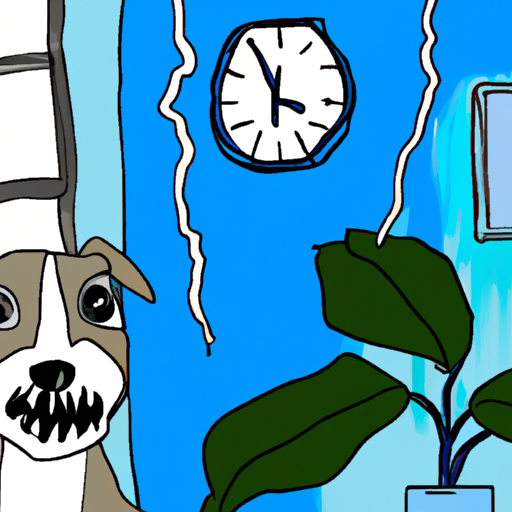As a devoted dog parent, you’ve likely noticed your furry friend panting on various occasions. But have you ever wondered why? Is it just because they’re hot, or could there be more to it? Panting can be a normal behavior for dogs, but excessive panting could also indicate that your dog is anxious or stressed.
Table of Contents
- Understanding Dog Panting
- Anxiety-Induced Panting in Dogs
- Other Signs of Stress and Anxiety in Dogs
- How to Help Your Anxious Dog
- Frequently Asked Questions
Key Takeaways
- Panting can be a sign of anxiety or stress in dogs.
- Other signs of stress include excessive barking and destructive behavior.
- There are several ways to help your anxious dog, including exercise, training, and professional help.
Understanding Dog Panting
Under normal circumstances, dogs pant as a way of cooling down. Unlike humans, dogs don’t sweat through their skin. Instead, they release heat and cool themselves down by panting. But not all panting is the same. If your dog is panting excessively or at unusual times, it could be a sign of stress or anxiety.
Anxiety-induced panting is typically rapid and shallow. It often occurs in situations that make your dog nervous, such as during thunderstorms or when meeting new people. If you notice this type of panting, it’s important to recognize that your dog may be feeling anxious.
OneTopDog has an interesting article about why dogs pant that dives deeper into the reasons behind this behavior.
Anxiety-Induced Panting in Dogs
Just like humans, dogs can experience anxiety. Common triggers include separation, loud noises, unfamiliar environments, and sudden changes in routine. When a dog is anxious, their body releases hormones that cause physical reactions, one of which is increased panting.
If your dog’s panting is accompanied by other signs of anxiety, such as pacing, trembling, or hiding, it’s likely that their panting is stress-related. It’s crucial to identify and address these symptoms early to prevent potential health issues.
Other Signs of Stress and Anxiety in Dogs
Apart from panting, there are other signs that your dog may be experiencing stress or anxiety. These can include:
-
Excessive barking or whining: Dogs often vocalize their stress. If your dog is barking or whining more than usual, it might be a sign of anxiety.
-
Destructive behavior: Dogs may chew on furniture or other items when they’re anxious.
-
Changes in eating habits: An anxious dog might eat more or less than usual.
-
Restlessness or pacing: Dogs who can’t relax or are constantly moving around may be stressed.
Check out this guide on recognizing stress in dogs from OneTopDog for more information.
How to Help Your Anxious Dog
If you believe your dog is exhibiting signs of anxiety, there are several steps you can take to help them feel more at ease.
-
Provide a safe space: Make sure your dog has a quiet, comfortable place where they can retreat to when they feel anxious.
-
Exercise regularly: Physical activity can help reduce anxiety. Make sure your dog gets plenty of walks and playtime.
-
Training and socialization: Training can increase your dog’s confidence and decrease anxiety. Socializing your dog with other dogs and people can also help.
-
Seek professional help: If your dog’s anxiety is severe, it may be worth consulting with a professional dog behaviorist or veterinarian.
This article on how to comfort an anxious dog provides more helpful tips.
Frequently Asked Questions
1. Is panting always a sign of anxiety in dogs?
No, panting is a normal canine behavior and is their primary way of cooling down. However, excessive, sudden, or unexplained panting can be a sign of anxiety or stress.
2. What can I do if my dog is panting due to anxiety?
Provide a calm and safe environment for your dog. Engage in regular exercise and consider training or professional help if the anxiety continues.
3. Can anxiety harm my dog?
Yes, prolonged stress or anxiety can lead to both physical and psychological issues in dogs. It’s important to address any signs of anxiety promptly.
In conclusion, panting can indeed be a sign of anxiety in dogs. As a responsible dog owner, understanding and recognizing the signs of stress in your pet is critical. If your dog is panting excessively, it’s always a good idea to consult a veterinarian to rule out any potential health issues. Remember, our furry friends rely on us to help them navigate the world, and understanding their behavior is the first step in ensuring their well-being.



